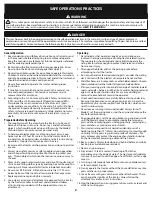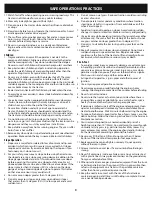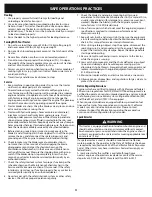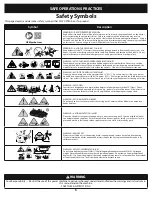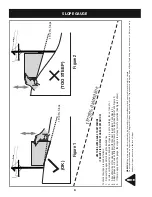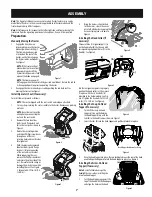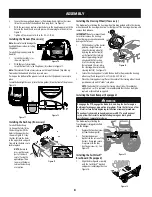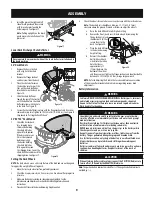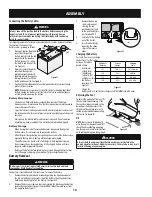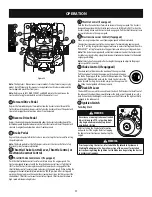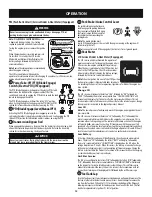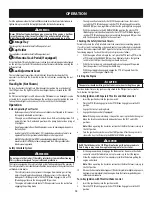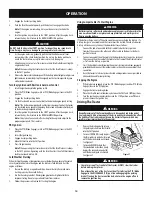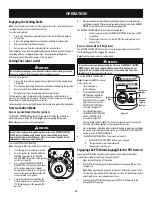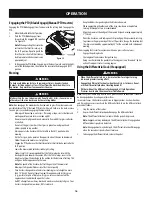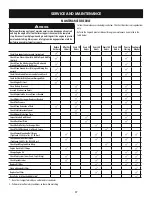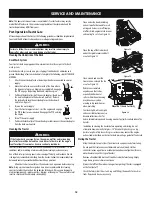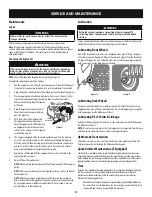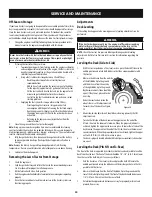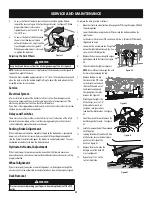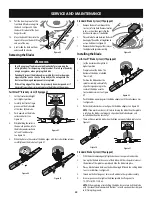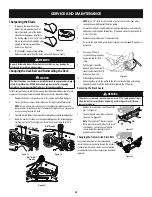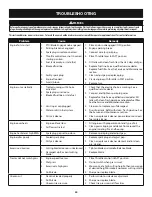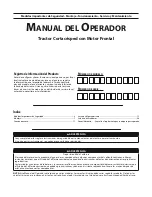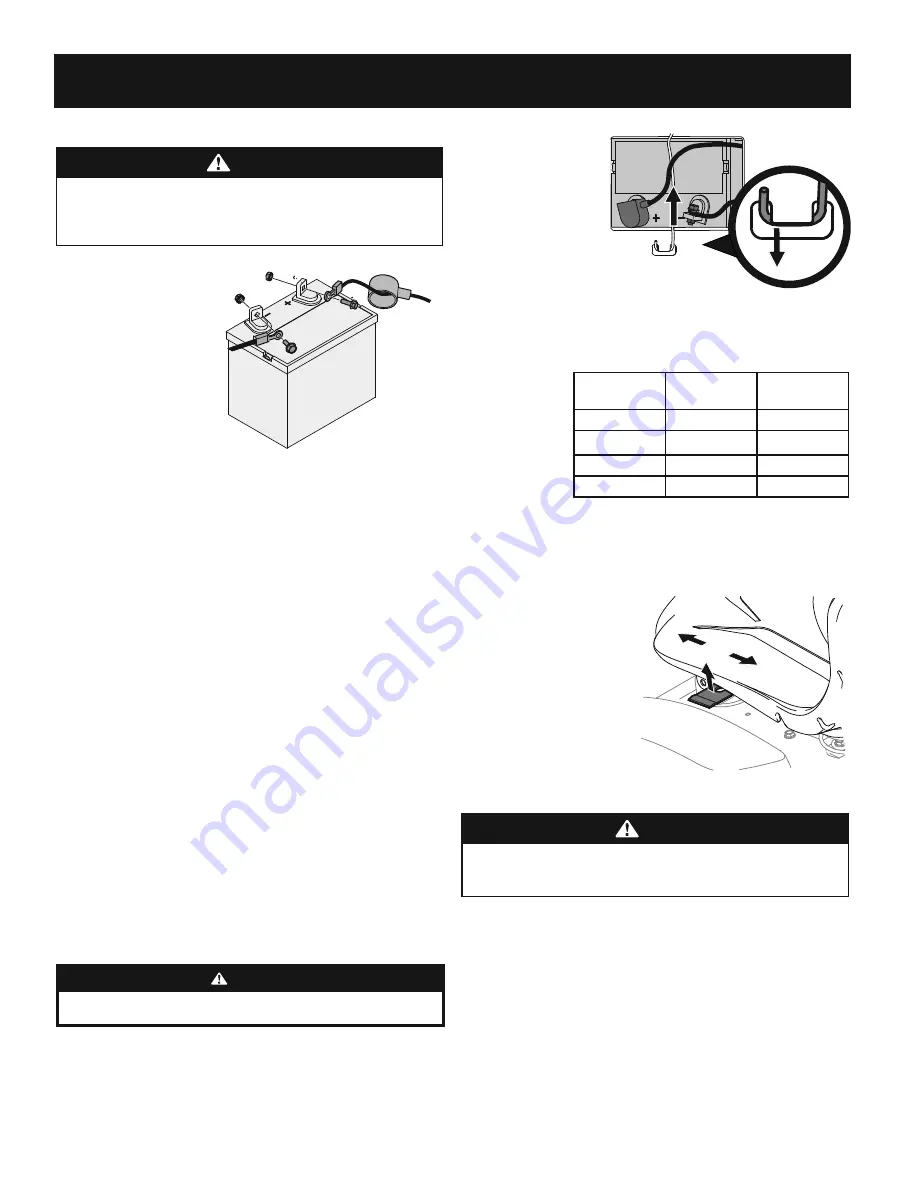
10
ASSEMBLY
Connecting the Battery Cables
WARNING
Always connect the positive lead to the battery before connecting the
negative lead. This will prevent sparking or possible injury from an
electrical short caused by contacting the tractor body with tools being
used to connect cables.
For shipping reasons the factory may leave both battery cables disconnected from
the terminals. To connect the
battery cables, proceed as follows:
1.
If present, remove the plastic
cover from the positive
battery cable. Attach the red
connector to the positive
battery terminal (+) using
the bolt (a) and hex nut (b).
See Figure 21.
2.
If present, remove the plastic
cover from the negative
battery terminal and attach
the black cable to the negative
battery terminal (–) with the
bolt (a) and hex nut (b). See Figure 21.
3.
Position the red rubber boot (c) over the positive battery terminal to help
protect it from corrosion.
NOTE:
If the battery is put into service after the date shown on top/side of
battery, charge the battery as instructed in the Service and Maintenance
section prior to operating the tractor.
Battery Maintenance
•
The battery is filled with battery acid and then sealed at the factory.
However, even a “maintenance free” battery requires some maintenance to
ensure its proper life cycle.
•
Spray the terminals and exposed wire with a battery terminal sealer, or coat
the terminals with a thin coat of grease or petroleum jelly, to protect against
corrosion.
•
Always keep the battery cables and terminals clean and free of corrosion.
•
Avoid tipping. Even a sealed battery will leak electrolyte when tipped.
Battery Storage
•
When storing the tractor for extended periods, disconnect the negative
battery cable. It is not necessary to remove the battery.
•
All batteries discharge during storage. Keep the exterior of the battery clean,
especially the top. A dirty battery will discharge more rapidly.
•
The battery must be stored with a full charge. A discharged battery can
freeze sooner than a charged battery. A fully charged battery will store
longer in cold temperatures than hot.
•
Recharge the battery before returning to service. Although the tractor may
start, the engine charging system may not fully recharge the battery.
Battery Removal
WARNING
Battery posts, terminals and related accessories contain lead and lead
compounds. Wash hands after handling.
The battery is located beneath the seat frame. To remove the battery:
1.
Remove the battery hold down bracket by pushing the hooked end out of
the tab on the fender to the right side of the battery. Then flip the battery
hold-down bracket up to free the battery. See Figure 22.
2.
Remove the hex cap screw and sems nut securing the black negative battery
lead to the negative battery post (marked NEG). Move the cable away from
the negative battery post.
(b)
(b)
(a)
(a)
(c)
Figure 21
3.
Remove the hex cap
screw and sems nut
securing the red
positive battery lead
to the positive battery
post (marked POS).
4.
Carefully lift the battery
out of the tractor.
5.
Install the battery by
repeating the above
steps in the reverse
order.
Charging the Battery
Test and, if necessary, recharge
the battery after the tractor
has been stored for a
period of time.
• A
voltmeter
or load tester
should read
12.6 volts (DC)
or higher across
the battery
terminals. See
Figure 23.
• Charge
the
battery with a 12-volt battery charger at a MAXIMUM rate of 10 amps.
Adjusting the Seat
To adjust the position of the seat, lift
the seat adjustment lever up. Slide
the seat forward or rearward to the
desired position; then release the
adjustment lever. Make sure seat is
locked into position before operating
the tractor. See Figure 24.
Oil
NOTE:
Your tractor is shipped with
oil in the engine. However, you MUST
check the oil level before operating.
See the engine manual for instructions
on checking, adding and changing oil.
CAUTION
Always check the engine oil level before each use as instructed in the
engine operator’s manual. Add oil as necessary. Failure to do so may result
in serious damage to your engine.
Figure 22
Voltmeter
Reading
State of
Charge
Charging
Time
12.7
100%
Full Charge
12.4
75%
90 Min.
12.2
50%
180 Min.
12.0
25%
280 Min.
Figure 23
Figure 24


